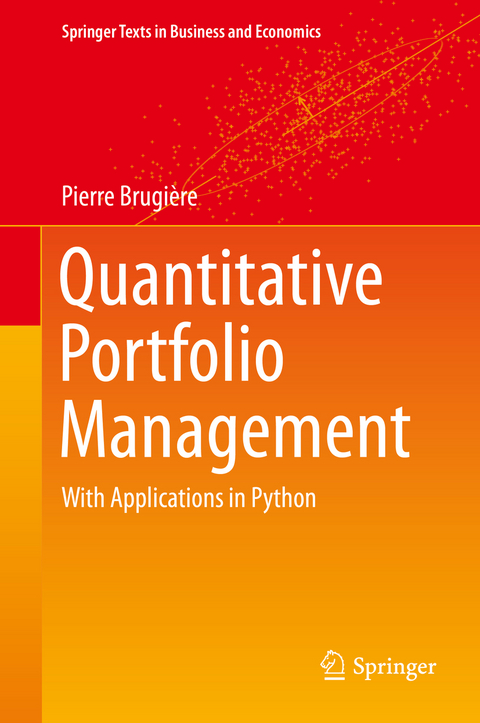
Quantitative Portfolio Management
Springer International Publishing (Verlag)
978-3-030-37742-7 (ISBN)
This self-contained book presents the main techniques of quantitative portfolio management and associated statistical methods in a very didactic and structured way, in a minimum number of pages. The concepts of investment portfolios, self-financing portfolios and absence of arbitrage opportunities are extensively used and enable the translation of all the mathematical concepts in an easily interpretable way.
All the results, tested with Python programs, are demonstrated rigorously, often using geometric approaches for optimization problems and intrinsic approaches for statistical methods, leading to unusually short and elegant proofs. The statistical methods concern both parametric and non-parametric estimators and, to estimate the factors of a model, principal component analysis is explained. The presented Python code and web scraping techniques also make it possible to test the presented concepts on market data.
This book will be useful for teaching Masters students and for professionals in asset management, and will be of interest to academics who want to explore a field in which they are not specialists. The ideal pre-requisites consist of undergraduate probability and statistics and a familiarity with linear algebra and matrix manipulation. Those who want to run the code will have to install Python on their pc, or alternatively can use Google Colab on the cloud. Professionals will need to have a quantitative background, being either portfolio managers or risk managers, or potentially quants wanting to double check their understanding of the subject.
Pierre Brugière is currently Associate Professor at University Paris 9 Dauphine. Previously he spent 19 years working in investment banking in London, in international banks, and 4 years in Paris in an arbitrage bank. During his career in finance he has been responsible for quant groups in fixed income, asset management and equity derivatives. In addition, in his role working for corporate equity derivatives businesses, he has been involved in structuring marketing and executing very large and strategic transactions for large companies and institutions, mainly in Europe, but also in Emerging Markets.
Returns and the Gaussian Hypothesis.- Utility Functions and the Theory of Choice.- The Markowitz Framework.- Markowitz Without a Risk-Free Asset.- Markowitz with a Risk-Free Asset.- Performance and Diversification Indicators.- Risk Measures and Capital Allocation.- Factor Models.- Identification of the Factors.- Exercises and Problems.
"The book contains both rigorously stated theory and practical instructions, up to instructions for programmers, it will be useful for a very wide audience, from students and teachers to experienced professionals in quantitative finance. It is written in clear, simple language and is quite interesting." (Yuliya S. Mishura, zbMATH 1452.91005, 2021)
| Erscheinungsdatum | 05.04.2021 |
|---|---|
| Reihe/Serie | Springer Texts in Business and Economics |
| Zusatzinfo | XII, 205 p. 23 illus., 22 illus. in color. |
| Verlagsort | Cham |
| Sprache | englisch |
| Maße | 155 x 235 mm |
| Gewicht | 341 g |
| Themenwelt | Mathematik / Informatik ► Informatik |
| Mathematik / Informatik ► Mathematik ► Angewandte Mathematik | |
| Wirtschaft ► Allgemeines / Lexika | |
| Wirtschaft ► Betriebswirtschaft / Management ► Finanzierung | |
| Schlagworte | 91G10, 91D70 • APT models • factor models • Markowitz theory • Principal Component Analysis • python code • Quantitative Finance • risk measures |
| ISBN-10 | 3-030-37742-3 / 3030377423 |
| ISBN-13 | 978-3-030-37742-7 / 9783030377427 |
| Zustand | Neuware |
| Haben Sie eine Frage zum Produkt? |
aus dem Bereich


